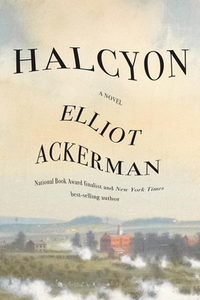Swamp by Johann G. Louis
 Friday, May 26, 2023 at 10:49AM
Friday, May 26, 2023 at 10:49AM 
First published in France in 2023; published in translation by Europe Comics on May 24, 2023
Swamp is a graphic novel. It tells the story of three kids during a summer in the Bayou in 1930. An afterword explains that it is a tribute to Southern gothic literature. Johann G. Lewis underplays the grotesque themes that characterize Southern gothic, although racism provides a grotesque undercurrent to the story. The setting includes an abandoned steamboat that is said to be haunted, but the story has no significant elements of the supernatural. To me, the story echoes Huckleberry Finn in its creation of an interracial friendship that defies cultural expectations.
Otis and Red are eleven. They live in the bayou. Neither child’s parents believe white and black kids should mix — not because they are racists, but because it isn’t safe. Yet the kids bond over their shared interests: skipping school, playing pranks, swimming and fishing.
Otis and Red take an interest in a family that’s occupying a local mansion for the summer. The family consists of a 12-year-old Shelley, her governess, and her mother. Shelley has a heart condition and is not supposed to go outside, but hanging with Otis and Red proves to be more entertaining than sitting in the house all day. Shelley befriends them platonically and equally. This is a simpler time when kids aren’t distracted by gadgets or the pressure of becoming a sexual person.
Black adults are searching for a man who went missing but they won’t talk about his disappearance with Otis. Red’s mother does what she needs to do to pay the rent but Red doesn’t understand why strange men visit the house. A gang of men, protected by the Klansman Sheriff, are killing blacks and causing problems for everyone they dislike. Thugs are smashing the windows of the general store owner.
Red has a vague sense that things aren’t as they should be, but he is the embodiment of innocence. He thinks life is good. Soon enough, he’ll realize that life can be ugly. The reader won’t want Red to grow up, but the best to be hoped for is that he grows up to be a decent person.
The story’s ending is equally sad and hopeful. Nothing good lasts forever but change does not mean the world is ending. Red and Otis are on the verge of transitioning to an adulthood that will probably be difficult for them both, but they’re in no hurry to enter a world that they regard as needlessly complex.
The story makes a simple point, but its simplicity reflects its honesty. There is nothing natural about racism. Kids don’t care about skin color. They care about being kids. They learn to hate from adults who sabotage the possibility of interracial friendships.
The art is also simple. Most daylight panels are a wash of pale green, reflecting the life of the swamp where much of the action unfolds. The art conveys the swamp’s spookiness with burls and knots that make trees seem human. The story’s sweetness is captured in both the art and the innocence of its child characters.
RECOMMENDED



